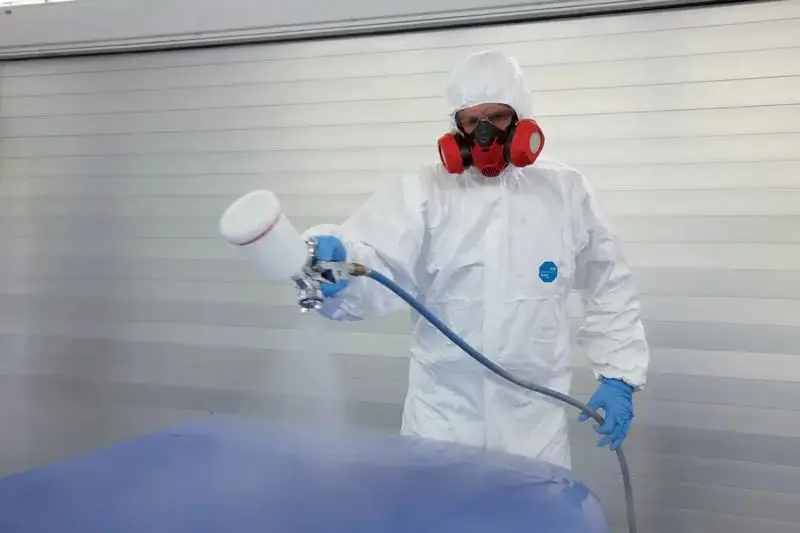Content Overview

What is surgical mask?
Surgical Mask is a kind of medical sanitary product, worn on the mouth and nose to filter the air inhaled and exhaled through. It is mainly used for general clinical care, medical procedures, and surgical protection, to block droplets, germs, viruses, and other substances.
Different countries and regions have different language habits, so there are many names for surgical masks, such as medical masks, medical procedure masks, disposable face masks…

What are surgical masks made of?
3 Ply Structure
Since surgical masks were invented in the early 1900s, for a long time they were made of tightly woven fabric or gauze, which we call cloth masks or gauze masks now. But at present, gauze masks have already disappeared from public view. Tightly woven fabric masks (cloth masks) also gradually deviated from the original intention of protection and began to develop in the direction of personal privacy protection and even fashion.
More than 90% of surgical masks are for disposable use at present and are mainly made of non-woven fabrics. Commonly, a 3-ply structure: 2-layer spun-bond non-woven with a melt-blown layer in the middle. The melt-blown fabric is the core of a surgical mask, it can filter tiny particles and bacteria through electrostatic adsorption.


Nose bridge & Earloops
Apart from the nonwoven fabric, surgical face masks also need other materials to support them, which include:
1. A nose bridge: There are mainly 3 types of nose bridges common to be seen in the market, which are aluminum-plastic wires, 100% plastic, and 100% aluminum. They are all with strong plasticity and make the masks better fit the wearer’s face shape.
2. Earloops: Earloops are usually made of elastics, and with them, masks can be stably hung before the wearers’ mouth and nose.
Cloth Masks Vs Disposable Masks
| Mask Types | Disposable Masks | Cloth Masks |
| Reusable | No | Limited Reuse Times |
| Price Range¹ | 0.008-0.012 USD/piece | 0.047-0.238 USD/piece |
| Number of Layers | 3-4 Ply | 6-24 Ply |
| Other Costs² | None | High |
Note:
| ||
As you can see in the table above, if cloth masks have the same BFE & PFE as disposable masks, then they have to be made at least 8 layers. This means their breathing resistance could be very large, which will affect the wearer’s breathing. So, it is not conducive for healthcare workers long-term wearing.
If cloth masks need to be reused, they must be cleaned and then sterilized at high temperature. Moreover, as medical devices, surgical have to be replaced every 4 hours, such a high frequency of use and sterilization, the human and financial costs are also a considerable amount of money. Damages caused by high-frequency cleaning and high-temperature sterilization will highly reduce the service life of a cloth mask.
In one word, why do healthcare workers choose disposable masks rather than cloth masks now? The obvious reason should be the costs. But non-woven masks are not without any shortcomings. For example, they are very unfriendly to the environment. We also hope biodegradable materials can be popular one day.
Different Types of Surgical Masks
By Mask Wearing method
Surgical Mask Ties-on
Surgical masks with ties require more time to put on due to the tying process, they are more often preferred in surgical environments where a secure fit is paramount. Properly tying the mask can ensure that it remains in place during procedures, which is essential for maintaining protection
By Color

Surgical masks - White, Blue, Green and Pink
Medical mask can be made in a variety of colors. In healthcare settings, white blue green are the most popular colors. For healthcare workers at pediatrics, to wear masks in pink also is a hot choice.
How to wear a surgical mask?
- Before wearing masks, wash your hands properly under flowing water.
- Make sure the surgical mask is in the validity period, and there are no damages on the mask and the package before wearing.

3. Hold the mask by the ear loops. Place a loop around each ear.

4. Mold the nosepiece to the shape of your nose.

5. Pull the bottom of the mask over your mouth and chin.
Note:
- A used mask is considered to be contaminated, so it is not suggested to be used again.
- Remove and replace the mask whenever it is needed, for example, if it is contaminated by one’s droplets, body fluids, etc. or it becomes wet.
- For continuous wearing, it is recommended to replace the mask every 4 hours.
- It is not recommended to wear a surgical mask while sleeping.











